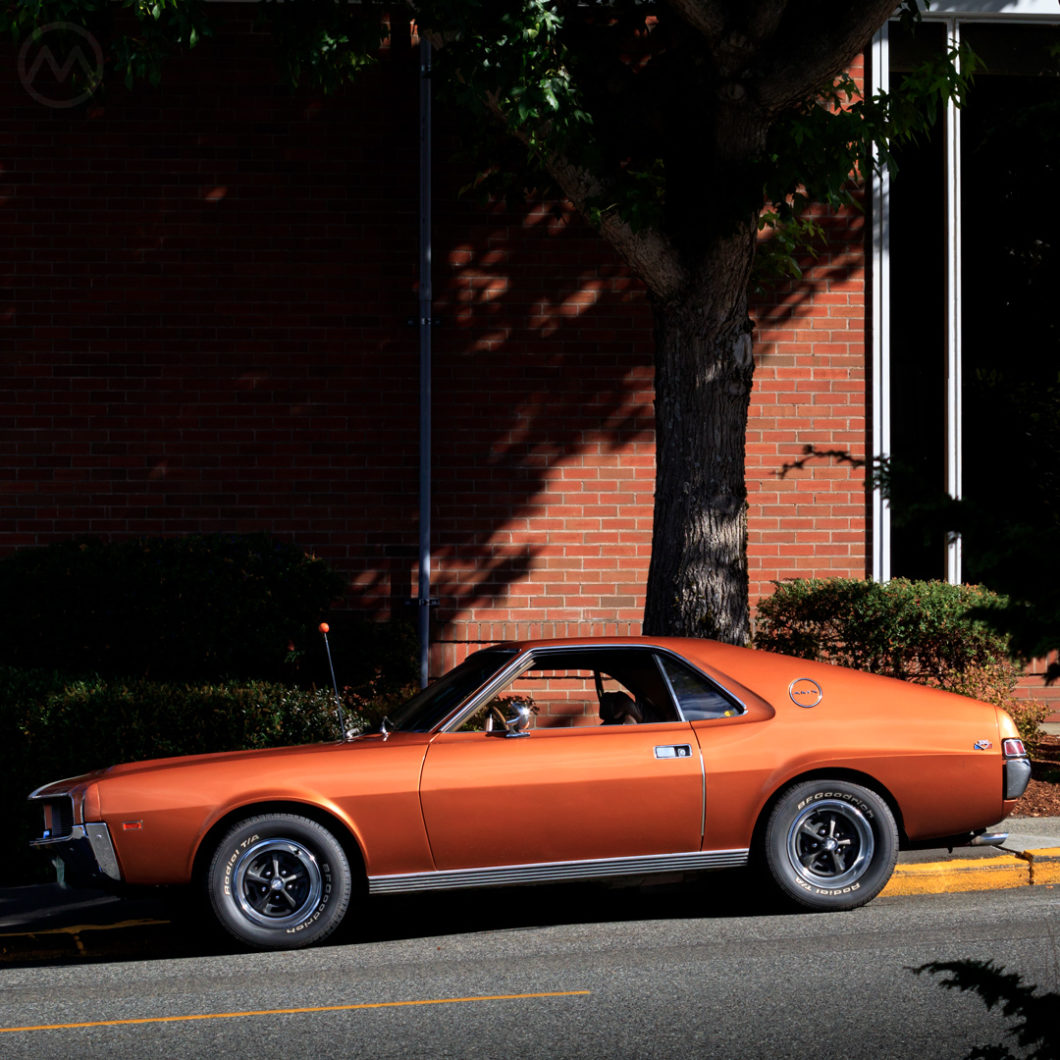AMC’s gravitation to Ramblers and economy paid big dividends in the late 50s and early 60s, but became a distinct liability in the era of pony cars. “The only race Rambler is interested in is the Human Race” sounds fine, but with sporty cars flying off the lot, AMC must have felt like it was sipping a decaf coffee while everybody else was having dessert.
Change was coming, courtesy of new management. Ex-Packard man Roy Abernethy became CEO in 1962 after George Romney, who’d seen the Nash/Hudson/AMC combine through its genesis went into politics.
Abernethy, meanwhile, had built AMC’s dealer network from the ashes of Nash/Hudson, was convinced that with better marketing, the company could take on the Big 3 in every arena – including large cars and muscle cars. This was to prove a grave miscalculation, but it did give AMC some very colorful cars.
The Marlin
In 1963, work began on what would be AMC’s first dedicated sporty coupe, and it’s first he sporty car of any kind since the 1950s Rambler Rebel (a very different kind of “performance car.” When it reached showrooms, this new car would be called the Rambler Marlin.
The Marlin originated as a concept by stylist Dick Teague on the small Rambler American platform – as a concept called the Tarpon. Abernethy wanted it on a bigger car – the Rambler Classic – and being the boss he got his way, though the Marlin’s fastback treatment was awkward on the bigger car.
Like the original Dodge Charger – a bigger car than the market wanted and too conservatively styled, the Marlin (also a fastback) failed to excite – just over 10,000 were sold and it was soon clear that the car just didn’t resonate.
Work on a very different replacement began only a few months after the Marlin debuted. A few months later, activist investor Robert Beverly Evans became AMC’s largest single shareholder.
That project ultimately became the AMC Javelin – but not before another major change in management culture.
Abernethy’s expansion of the sizes and scope of AMC’s offerings cost a fortune – the largest chunk of which took place in 1966, when the company retooled for the 1967 Ambassador – to the tune of $60M – and in five years of leadership, the company went from profits to losses and a struggle for working capital.
Abernethy was ultimately forced out by Evans, whose shares earned him a seat on AMC’s board, in January, 1967, in favor of long-time AMC/Hudson man Roy D. Chapin Jr., who gave the designers and marketers considerably more freedom to do what they did best.
Turn, Turn, Turn
One thing everyone agreed on – even Abernethy – was that AMC needed a better image, and what better way to do that than a sporty car? But it had to be something that connected better than the Marlin.
Dick Teague’s styling team put together two stunners – the Javelin and the short-wheelbase AMX, previewed with a concept car built by Vignale to Teague’s styling. A third concept car from this era, the Cavalier, previewed derived themes that would later be seen on the Hornet.
Evans in particular was so taken with the AMX concept that he had it greenlit for production – without his interest it may not have happened.
Even in an era of a vast array of muscle car choices, the AMX was unusual – it was a short-wheelbase Javelin with a sharply sloping fastback and it was a two-seater – the only other two-seater around was the Corvette.
For what was a physically smaller car than the Javelin, the AMX didn’t weigh much less – about halfway between a six-cylinder base Javelin and a V8 Javelin – but performance was electrifying – especially for a car from previously-frumpy AMC – and both cars were good handlers – something most muscle cars could not claim.
The Javelin went on sale in September of 1967 and the AMX followed in February of ’68. Because it was a late intro, it ran through 1969 with only minimal changes.
The AMX was V8 only, with a base 290 with 225 hp an an optional 343 (supplanted by AMC’s 360 in 1970) or 390 – the latter, with dual carbs, pushing out 340hp.
Flying Colors
There were many performance extras and the cars also featured bold “Big, Bad” colors (“Big Bad Orange,” etc. – this is a “regular” color, Bittersweet Orange) and wild promotional campaigns involving legit racing and speed record achievements and more marketing oriented things like a partnership with Playboy.
There was also a splashy Ad campaign from Wells, Rich, and Greene – the Mary Wells (Later Mary Wells Lawrence)-led Ad agency responsible for transforming Braniff from an old-fashioned Texas air carrier to the most stylish airline in the world just two years earlier.
The AMX never sold well, but it was intended purely as a halo car – Javelin sales exceeded expectations and the AMX’s costs were kept down by sharing most components.
The AMX continued into 1970 before the two-seater shell was dropped and the name became an option package for the four-seat Javelin (and was later revived on the Concord and Spirit).

